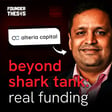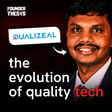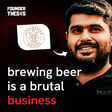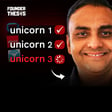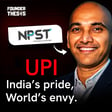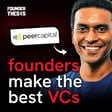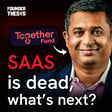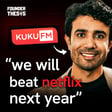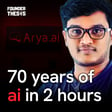
Inside Beams Fintech Fund: How Sagar Agarvwal Picks India’s Next Fintech Unicorns
How did a first-time fund manager build one of India’s most influential fintech-focused VCs in the middle of a funding winter? In this Founder Thesis Podcast episode, Sagar Agarvwal, Co-founder & Managing Partner of Beams Fintech Fund, shares his journey of creating India’s first pure growth-stage fintech venture fund and the playbook for spotting winners at the 100→1000 crore inflection point.
With over 17 years in private equity and venture capital, Sagar explains why fintech is the backbone of every economy, how Beams carved out a niche in India’s crowded VC landscape, and what it takes to convince both investors and founders when you’re a new name in the market. In this candid conversation with Akshay Datt, he breaks down Beams’ disciplined portfolio strategy, contrarian views on unsecured lending, and why fintech founders must think “fin first, tech second.” For anyone building, scaling, or investing in India’s financial services revolution, this episode is packed with practical insights and timely lessons.
Key Highlights:
- How Sagar Agarvwal built Beams Fintech Fund into India’s first pure growth-stage fintech VC platform
- Lessons from scaling a $120M fund in India’s funding winter
- Beams’ unique investment thesis across payments, lending, insurtech, and infra
- Why “fin first, tech second” is the mantra for fintech founders
- Contrarian insights on unsecured vs secured lending in India
- Macro trends reshaping India’s financial services ecosystem
👉 Subscribe to the Founder Thesis Podcast
👉 Follow Akshay Datt on LinkedIn for exclusive founder stories
👉 Visit founderthesis.com for more episodes
00:00 - Sagar Agarvwal’s 17-Year Investor Journey
05:20 - Why Fintech Is the Backbone of Every Economy
13:15 - Building Beams Fintech Fund from Zero to $120M
21:40 - Convincing Investors and Founders as a First-Time Fund Manager
32:50 - Beams’ Investment Playbook: Profit Pools & Inflection Points
44:25 - Case Study: Niyo, Progcap & Credgenics Investments
53:10 - Funding Winter: How Smart Founders Survive
59:40 - Fintech Founder Mistakes and Investor Lessons
Sagar Agarvwal, Beams Fintech Fund, fintech VC India, fintech venture capital, fintech growth stage India, Niyo investment, Progcap funding, Credgenics startup, InsuranceDekho VC, India fintech funding winter, unsecured vs secured lending India, Akshay Datt Founder Thesis, India fintech ecosystem 2025, UPI growth India, RBI fintech regulations, fintech venture fund India, growth stage VC India, fintech investing playbook, Beams VC thesis, future of fintech India









